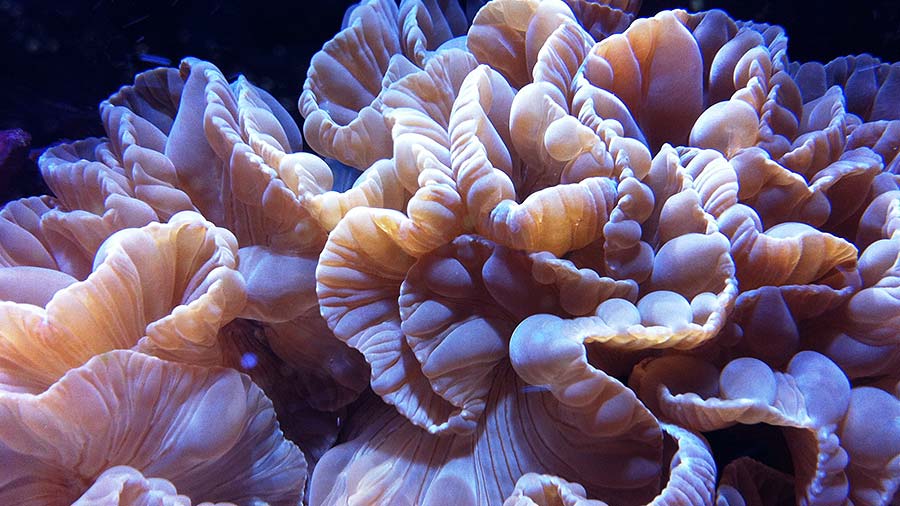Coral reefs are often described as the “rainforests of the sea,” bursting with life, color, and diversity. These underwater ecosystems are built and maintained by an incredible group of marine animals known as coral. There are many types of coral, each contributing uniquely to the structure, health, and beauty of coral reefs around the world. Understanding the types of coral is essential for appreciating marine biodiversity and recognizing the urgent need for coral conservation.
Corals are not just rocks or plants — they are living organisms. Each coral colony is made up of thousands of tiny polyps, working together to build vibrant structures over time. These fascinating creatures are responsible for the formation of coral reefs, providing habitats for a quarter of all marine species. The types of coral found in different oceans can vary greatly, depending on location, depth, temperature, and water clarity.
There are two main types of coral: hard corals and soft corals. Hard corals, also called stony corals, build the backbone of coral reefs. These corals secrete calcium carbonate, which hardens into a limestone-like skeleton that becomes the foundation of reef ecosystems. Notable examples include staghorn coral, elkhorn coral, and brain coral, all of which are found in well-known reefs from the Caribbean to the Great Barrier Reef.
In contrast, soft corals lack a rigid skeleton and are more flexible, often swaying with ocean currents. Soft corals, like sea fans and sea whips, do not contribute to reef-building but still play a vital role in reef ecosystems by providing shelter and feeding grounds for marine life. Their feathery, plant-like appearance adds movement and color to reefscapes and helps complete the biological puzzle of underwater habitats.
Corals grow in various shapes, and these growth forms help scientists and divers identify different types of coral. Branching corals resemble underwater trees, providing complex hiding spaces for fish and invertebrates. These corals are fast-growing but sensitive to environmental changes. Plate corals grow in flat, table-like shapes that maximize surface area for light absorption, which is essential for the photosynthetic algae living within them.
Massive corals grow slowly into large, dome-shaped structures that are more resistant to storms and bleaching events. Encrusting corals spread low and flat across the reef, forming thick coatings over rocks and dead coral skeletons. Each coral shape serves a different ecological function and contributes to the overall health and resilience of the coral reef environment.

Throughout the world’s oceans, coral reefs are home to a variety of iconic coral species. The staghorn coral is easily recognized by its antler-like branches and rapid growth rate. Elkhorn coral features thick, flat branches and plays a key role in reef construction. Brain coral, named for its grooved, maze-like surface, is a slow grower but highly durable, often living for centuries.
Other spectacular species include mushroom coral, which is solitary and mobile, unlike most other corals. The rare blue coral, with its stunning blue skeleton, and the mysterious black coral, often used in jewelry, showcase the diversity of life in coral reefs. Each of these types of coral can be found in different parts of the world, from coral islands in the Indian Ocean to reefs near Cape Coral Florida.
Coral reefs are among the most diverse ecosystems on Earth. They provide habitat, food, and nursery grounds for thousands of marine species. Reefs also act as natural breakwaters, protecting coastal areas like Cape Coral FL and Coral Gables from erosion and storm surges. Some coral reefs form in shallow tropical waters, while others exist in colder, deeper parts of the ocean.
Reefs are usually classified by formation type: fringing reefs develop close to shorelines, barrier reefs grow further offshore, and atolls form ring-shaped coral reef systems around lagoons. These formations are not only ecological treasures but also economic assets, attracting millions of tourists annually to destinations like the TRS Coral Hotel or the coral pink sand dunes. Coral reef tourism contributes billions to global economies and supports thousands of coastal communities.
Despite their resilience, all types of coral are facing unprecedented threats. Coral bleaching, caused by rising ocean temperatures, is one of the most urgent issues. When water becomes too warm, corals expel the symbiotic algae that give them color and nutrients, turning white and vulnerable. Without these algae, corals starve and may eventually die.
Other dangers include ocean acidification, overfishing, sedimentation, and pollution. Destructive fishing practices and irresponsible tourism can physically damage coral reefs, while chemical runoff and plastic waste can poison these delicate ecosystems. Coral reefs across the globe, including those near Cape Coral weather-prone zones, are already showing signs of stress. Urgent action is needed to preserve all types of coral for future generations.
Fortunately, efforts to protect and restore coral reefs are underway. Coral farming and reef restoration projects are helping regrow damaged areas. Scientists are developing heat-resistant coral strains that may withstand future ocean warming. Marine protected areas limit harmful human activity, giving reefs a chance to recover naturally.
You can help by supporting reef-safe products, avoiding coral souvenirs, and educating others about the importance of coral. Sustainable tourism practices—like visiting eco-certified dive centers and resorts such as Coral Castle or coral island destinations—can make a positive impact. Everyone has a role to play in protecting the types of coral that keep our oceans alive.
Corals are living architects of the sea. From the stony hard corals that build vast reef systems to the flexible soft corals that add texture and beauty, the many types of coral are vital to ocean life. Each species, shape, and form contributes to a greater ecosystem that supports biodiversity, stabilizes coastlines, and inspires human culture and creativity.
By understanding the types of coral and their ecological value, we begin to appreciate the importance of protecting these marine wonders. Whether through conservation, responsible travel, or raising awareness, our actions can ensure that coral reefs continue to thrive beneath the waves for generations to come.
What are the main types of coral?
The two primary types are hard corals (stony or reef-building) and soft corals, each with different structures and roles in the ecosystem.
What is coral bleaching and why is it dangerous?
Coral bleaching happens when corals lose their symbiotic algae due to heat stress, making them vulnerable and often leading to death if prolonged.
Can coral grow in cold water?
Yes, some types of coral, such as deep-sea or cold-water corals, grow in low-light, cold environments and can survive without symbiotic algae.
Where are coral reefs commonly found?
They are mostly located in warm, shallow tropical oceans like the Caribbean, South Pacific, and Indian Ocean, including places like Cape Coral Florida.
How can I help protect coral reefs?
Use reef-safe sunscreens, reduce plastic use, support marine conservation groups, and promote sustainable tourism practices when visiting coral reefs.
You may also read: Hydroids: Tiny Marine Predators Transforming Ocean Ecosystems

